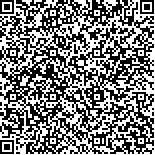| 摘要: |
| [方法]以江苏省大丰市2013年度土地利用变更调查数据为基本数据源,利用arcgis10.0将其分别转化为50 ~ 500m以内以50m为间隔的10组栅格数据,利用fragastats3.4对9个景观指数进行计算,[目的]分析其农村居民点景观格局特征及其粒度效应。[结果]研究表明:研究区农村居民点小斑块所占比例较大,面积在1hm2以下的斑块占总斑块数的80%以上,整体分布呈现出“大分散、小集中”的特点。农村居民点景观指数具有明显的粒度效应,其中随粒度增大而增加的有平均斑块面积、景观面积和最大斑块指数,随粒度增大而降低的有斑块个数、斑块密度、形状指数、聚集度指数、结合度指数和分离度指数。粒度响应最敏感的指数为斑块个数和斑块密度,具有中等敏感性的指数为平均斑块面积、分离度指数和聚集度指数,结合度指数、最大斑块指数、斑块形状指数和景观总面积对粒度响应的敏感性较低。[结论]综合各个景观指数的变化特点发现,粒度的增大最终将导致研究区居民点景观斑块形状更加规则,最大斑块的优势度上升,景观破碎度降低,景观斑块间连通性降低且分布趋向分散。该研究可为农村居民点规划与生态评价提供依据。 |
| 关键词: 土地生态 农村居民点 景观指数 粒度 滨海开发带 |
| DOI:10.7621/cjarrp.1005-9121.20170304 |
| 分类号: |
| 基金项目: |
|
| EFFECTS OF CHANGING GRAIN SIZE ON LANDSCAPE INDICES OF RURAL SETTLEMENT AT COUNTY SCALE OF BINHAI DEVELOPMENT ZONE——A CASE STUDY OF DAFENG COUNTY IN JIAGNSU PROVINCE |
|
Cui Shanshan1,2, Liu Qing3, Wang Jing4
|
|
1. College of Resources and Environment, Qingdao Agricultural University , Qingdao, Shandong 266109, China;2. China Land Surveying and Planning Institute, Beijing 100035, China;3.College of Resources and Environment, Qingdao Agricultural University , Qingdao, Shandong 266109, China;4.China Land Surveying and Planning Institute, Beijing 100035, China
|
| Abstract: |
| Taking the 2013 year′s land survey data on the rural settlement in Dafeng county of Jiangsu province as the basic date source, this paper transformed the vector data to raster data from 50~500m by step length of 50m interval based on Rule of Centric Cell by using ArcGIS10.0 software, calculated the nine selected landscape indices using Fragstats 3.4 software, and analyzed the effect of the rural settlement landscape pattern which was influenced by different grinds of administrative center. The results showed that the small patch was in a large proportion of rural settlement, the number of the area less than 1hm2 reached 80% of the total patch, and showed a distribution characteristic of "large dispersion, small Aggregation". The rural settlement landscape indices all had strong scale effect. The increase of granularity increased the average area of patches, the landscape area, and the largest patch indices, and decreased the numbers of patches, the patches density, the patch shape index, the landscape aggregation index, the patch cohesion index and landscape division index. In all of these landscape indices, the most sensitive indices to the granularity were the number and density of patches, the middle sensitive indices were the average area of patches, the aggregation index, and the division index, and the low sensitive index were the cohesion index, the largest patch index, and the patch shape index. It concluded that the increase of granularity would lead to the shape of patches be more inerratic, increase the degree of the dominance of the largest parch, decrease the degree of fragmentation of the patches, and disperse the patches distribution. This study can provide an evidence for rural settlement planning and ecological evaluation. |
| Key words: land ecology rural settlement landscape indices granularity effect Binhai development zone |

